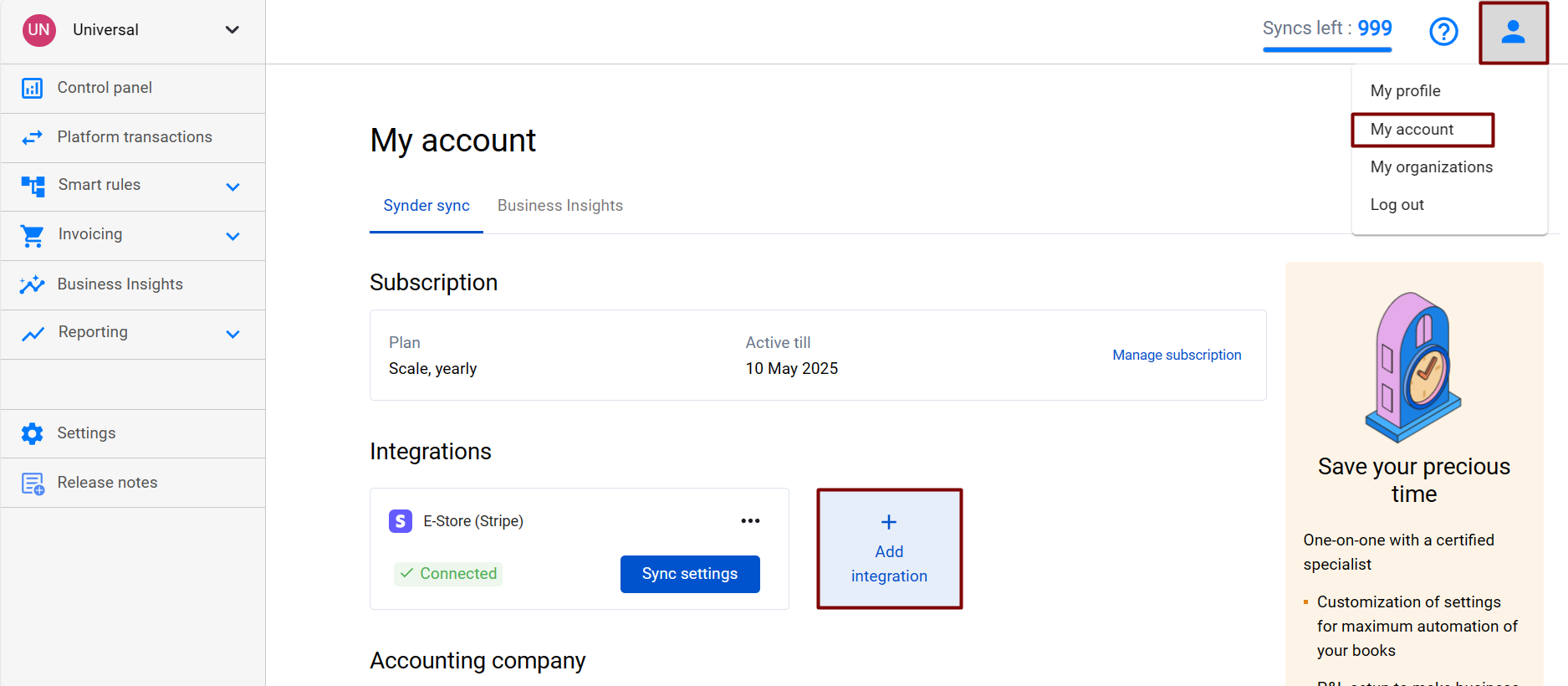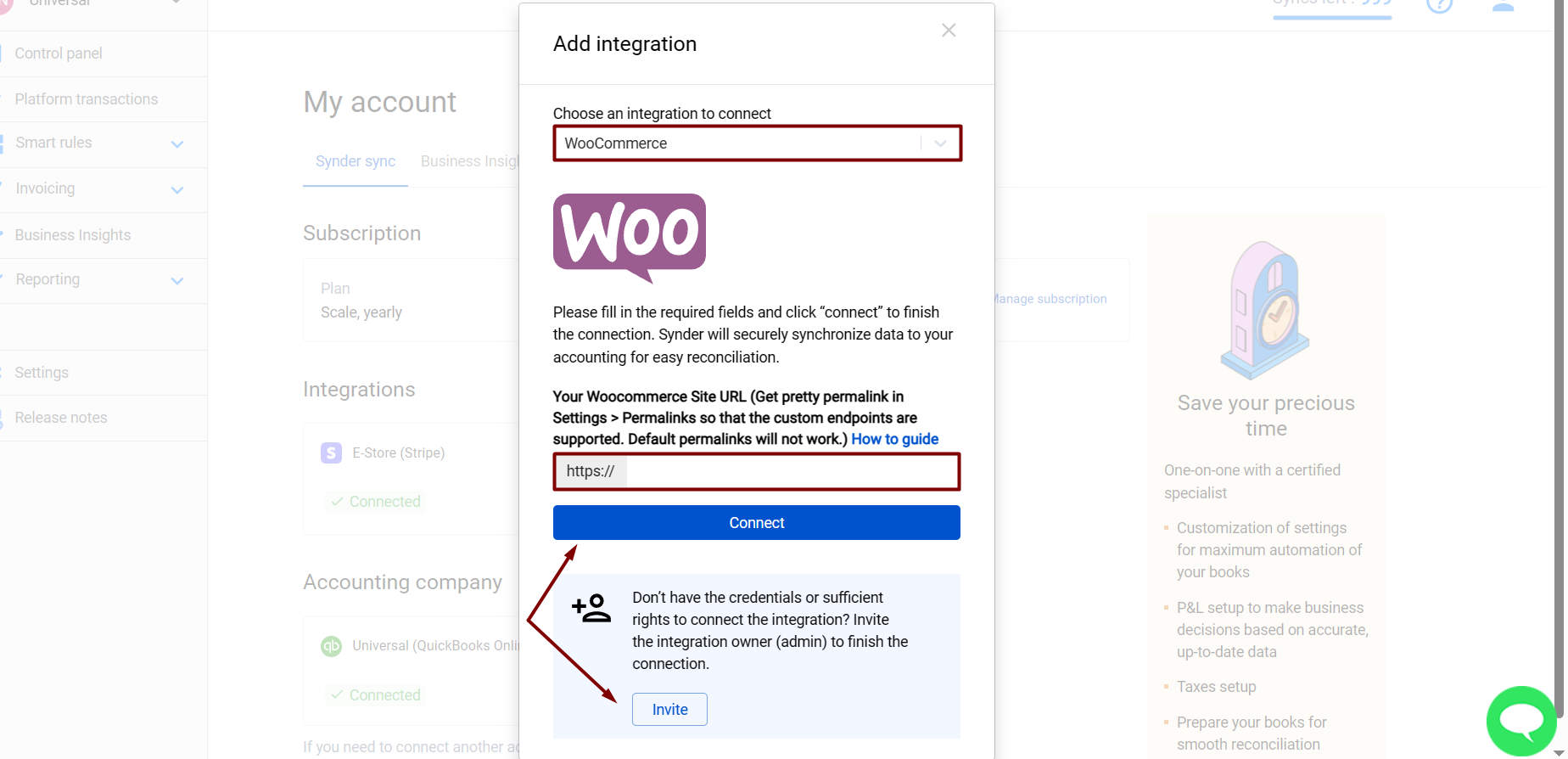Overwhelmed with sales data and wish there was an easy and reliable way to deal with your WooCommerce accounting? If you were looking for a quick and secure automatic solution to transfer your WooCommerce payments, the corresponding WooCommerse fees and WooCommerce taxes into your accounting company, then search no more! Synder will handle this for you, preparing your books for one-click reconciliation in QuickBooks or Xero (learn more about our automatic bank reconciliation feature for Xero in this article). Synder also allows multi-currency accounting for your WooCommerce payments and inventory tracking in your accounting company and categorizing the synced data automatically to keep your books up-to-date and accurate.
Great news, isn’t it? Let’s learn how to connect WooCommerce to your accounting company with the help of Synder.
Overview:
Important Note: in order to provide quick reconciliation, Synder needs ALL the supported payment gateways connected in addition to your e-commerce (e.g. Stripe, PayPal, Square).
Start the WooCommerce integration from scratch
1. Create an account
If you’re getting started with Synder you’ll need to create a free Trial account and connect your accounting system first. Check out this guide if you would like to integrate your payment platform with QuickBooks Online or Xero, and this article to connect your QuickBooks Desktop company.
2. Provide your business details
Going through the set-up process of an Organization for your QuickBooks/Xero company, fill in the information about your business and hit the Next step button.
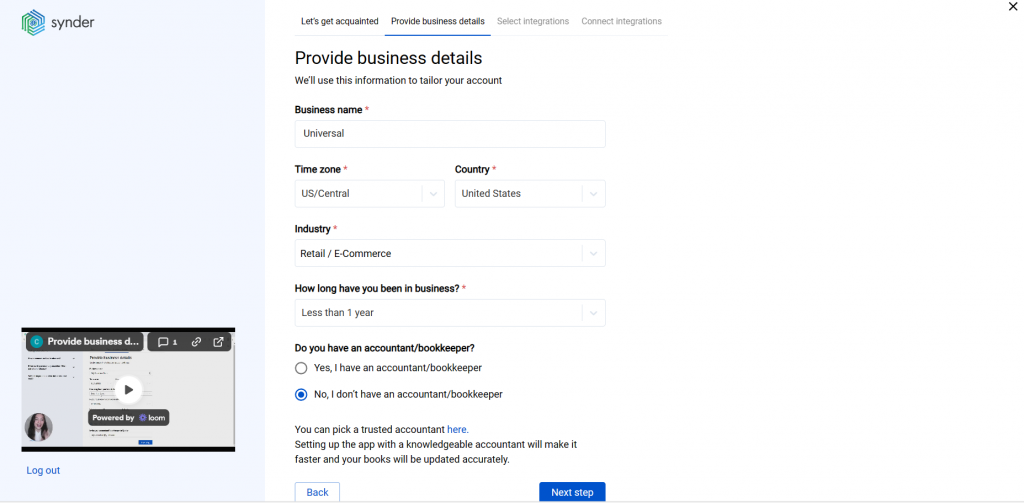
3. Select the platforms you’d like to integrate
Now you need to select the platforms you would like to connect to Synder. Click View all integrations to see the list of all available platforms.
Note: Mark all the services you are using to receive payments, you will be able to connect all of them right away or skip the connection of particular integrations and set them up any time later.
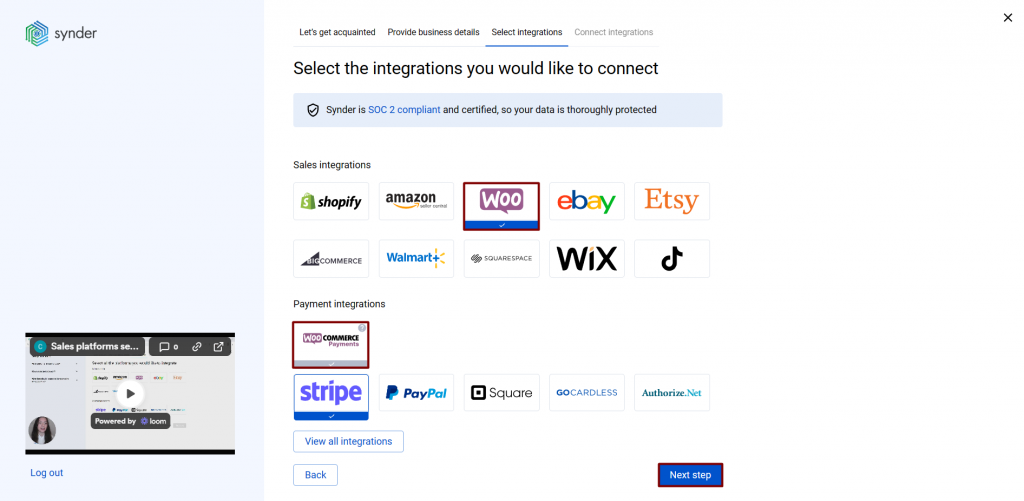
4. Connect your accounting platform
Select the accounting company you’d like to connect to Synder and click on Next step.
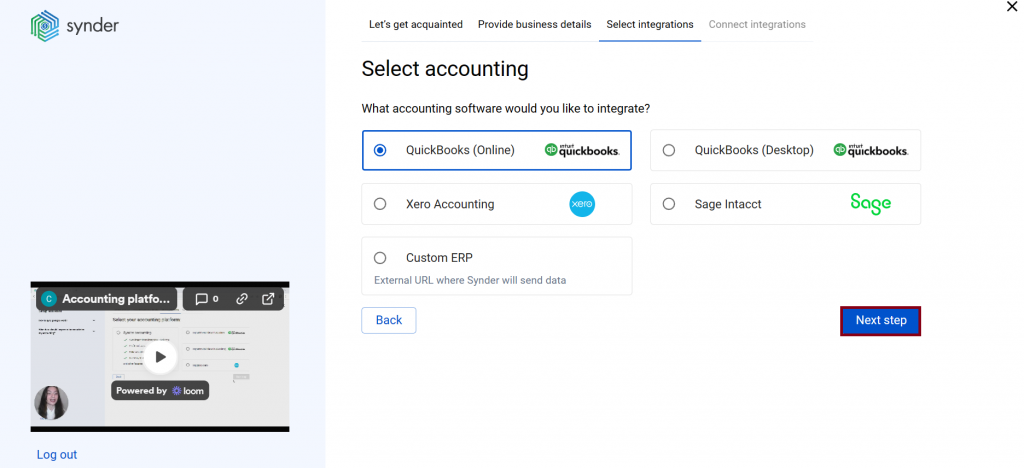
Note: If you are connecting QuickBooks Online or Xero, you will be prompted to select the sync mode. Proceed with the desired option.
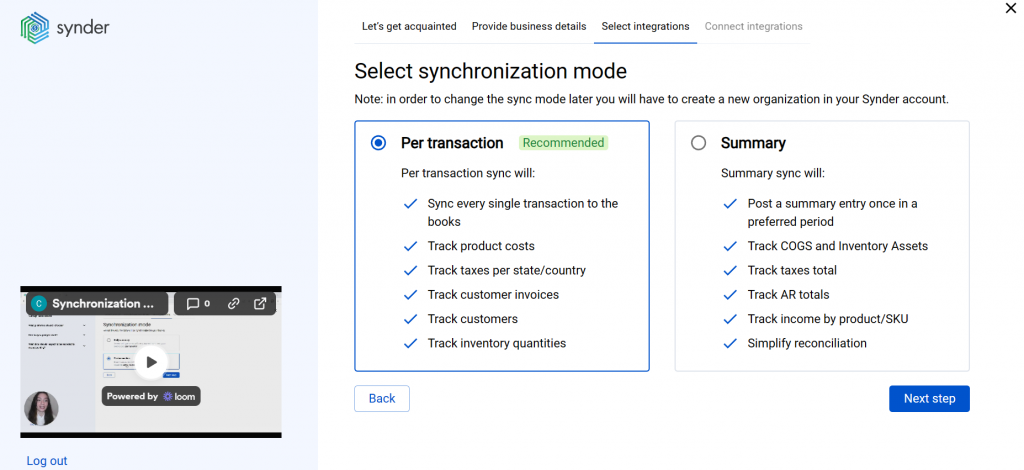
Click on Connect to connect your accounting company.
5. Connect your WooCommerce store
Almost there! To complete the setup, you just need to connect your WooCommerce and other sales platforms, if any, to Synder. Select WooCommerce and specify the permalink to the store. Please note that you’ll need to get the ‘pretty’ permalink in your WooCommerce Settings → Permalinks:
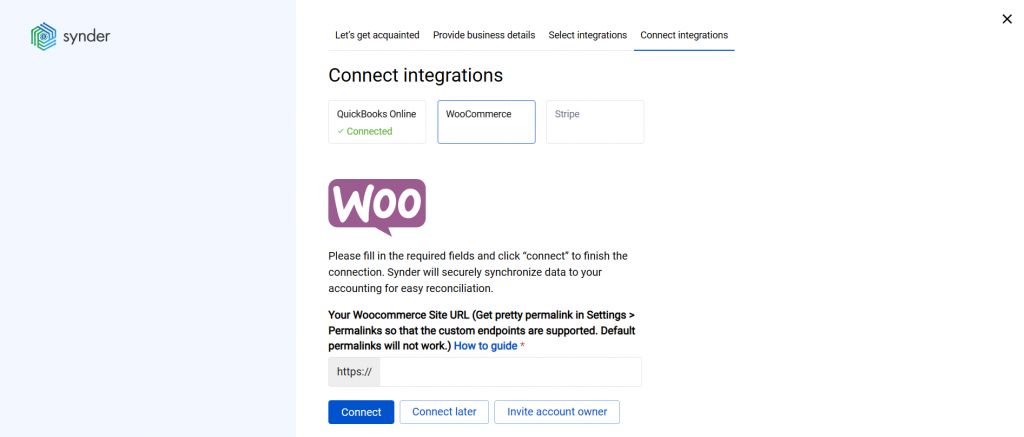
Once you click Connect, you’ll be taken to your WooCommerce store, where you’ll need to grant permissions for Synder to communicate with it. Click Approve, and you’ll be redirected back to Synder.
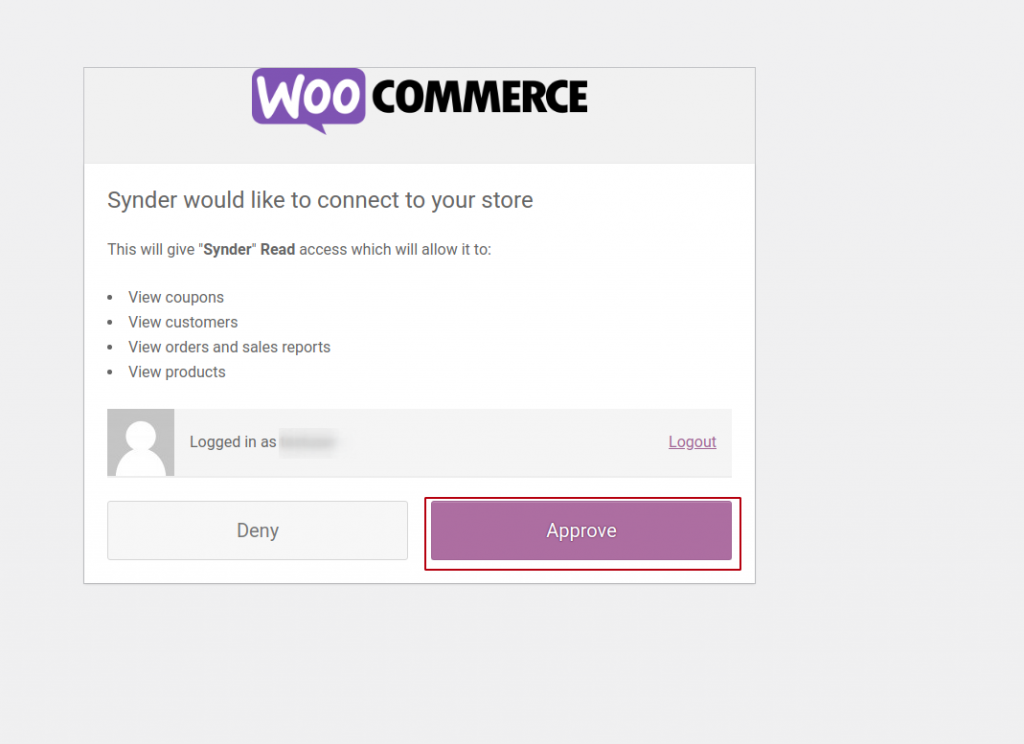
Note: If you do not have admin access in WooCommerce, please hit the Invite account owner button and specify the account owner email. They will receive an invitation via email and will be able to grant the required permissions and connect WooCommerce to Synder.
Note: You can find our detailed guides on how to connect your sales channels and payment providers to Synder accounting/QuickBooks Online/Xero via Synder in our Help center.
6. Set up the WooCommerce integration
To complete the setup for the WooCommerce integration, choose an account for payouts (usually, your Checking account) that will allow smooth reconciliation of your WooCommerce payments in one click. Hit Continue to finish the configuration.
Connect WooCommerce to an already existing account
If you already have a Synder account and would like to integrate your WooCommerce store, follow the steps below:
1. Switch to the needed Organization in the top-left corner of the Synder page.
2. Click on the Person icon in the upper-right corner and select My account.
3. In the Integrations section, click Add integration.
4. Select WooCommerce.
5. Specify the permalink and click Connect. If you don’t have admin rights, send an invitation to the account owner.
6. To complete the setup for the WooCommerce integration, choose an account for payouts (usually, your Checking account) that will allow smooth reconciliation of your WooCommerce payments in one click. Hit Continue to finish the configuration.
Tips and tricks on the WooCommerce integration
Note 1: If you accept payments for WooCommerce orders via alternative payment platforms, i.e. Affirm, Afterpay, Authorize.Net, PayPal, Square, Stripe, connect them to Synder. In this case, Synder will take WooCommerce order information, such as taxes and products, and fetch it to your payment platform transactions. If you don’t connect these providers, no transactions will be imported.
Note 2: If you connect only WooCommerce with no other payment providers to Synder (e.g. your WooCommerce store accepts payments via payment gateways that Synder does not have direct integrations with), Synder will fetch only the gross amount of your transactions and record it to a separate clearing account called WooCommerce Order (required for Synder).
Note 3: If you get paid via WooCommerce Payments provider, you only need to connect WooCommerce to Synder to record all the transaction details automatically.
Note 4: Some WooCommerce store domains have subfolders, and if you use a site URL containing a subfolder, you will receive a 404 error. To avoid this, make sure you use only the WooCommerce site URL and erase any subfolder details for the connection. Learn more How to fix 404 errors while connecting WooCommerce.
Note 5: If your WooCommerce store accepts payments via different channels, and they are already connected, but not all WooCommerce order details are fetched by Synder, then the problem may root in the inability of Synder to reach your WooCommerce store. In order to fix this, you need to allow WooCommerce to respond to Synder with details.
Reach out to the Synder team via online support chat, phone, or email with any questions you have – we’re always happy to help you!
